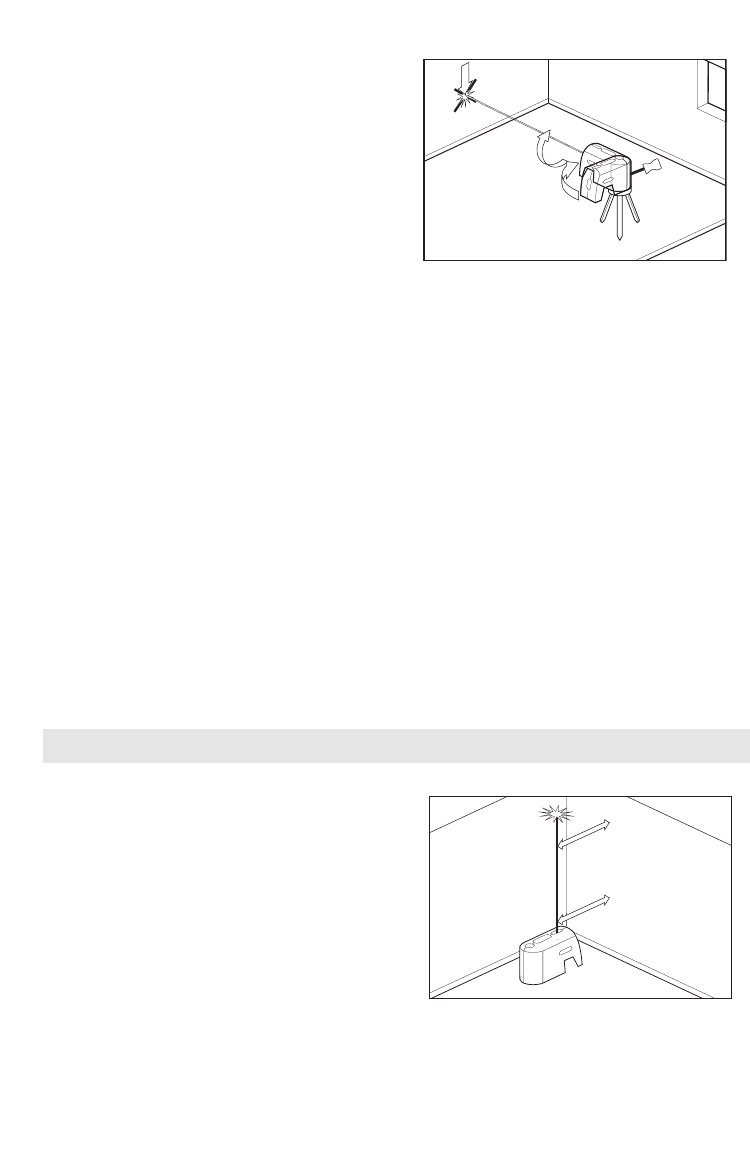
-11-
12. Rotate the tool around 90 degrees
and position the front laser beam on the
vertical surface. Compare the height of
this beam with the height of the calibrated
side beams. If the height of this beam
matches the height of the side beams,
calibration is complete and you may exit
calibration mode. To exit Calibration
mode, push the power switch into the
CAL (override) position and hold for
5 seconds. The laser beams will flash
rapidly for the 5 seconds until it exits
calibration mode. Once out of calibration
mode, the laser beams will remain steady
if the device is level or the beams will
flash slowly if the device is out-of-level.
Release the power switch from the
CAL(override) position. You can also exit
calibration mode by turning the power
switch to the off position and back on for
normal operation. If the front beam does
not match the side beams, proceed to
the next step.
13. The goal of the next step is to position
the front beam at the same height as the
last mark to be made in the previous
steps or at the same height as the
calibrated side beams. Verify that the
laser beam are flashing fast confirming
that the device is level and in
calibration mode.
14. Insert provided tool into the back
calibration port. Locate the calibration
screw and rotate it in a clockwise
direction to the raise the beam or in the
counter-clockwise direction to lower
the beam.
15. Turn the tool and check the height
of the front beam again.
16. Repeat steps 13 steps through 15 until
the front beam matches the height of the
two calibrated side beams and proceed
to the next step.
17. Insert and screw the calibration plugs
back into the tool Calibration is
complete. Once out of calibration mode,
the laser beams will remain steady if the
device is level or the beams will flash
slowly if the device is out-of-level.
Release the power switch from the
CAL(override) position. You can also exit
calibration mode by turning the power
switch to the off position, waiting 2
seconds and back on for
normal operation.
13
15
Applications
Plumbing a surface
1. Position tool close to the surface to
be plumbed.
2. Turn on tool.
3. Measure distance A at a point relatively
close to tool and make a note of
the distance.
4. Measure distance B at a point further
away from tool and make a note of
the distance.
Note: The greater the distance between the
two points of measurement, the greater
the accuracy.
5. Compare distance A with distance B. If
distance A equals distance B, then the
surface is plumb. If distance A does not
equal distance B, then the surface is not
plumb and should be corrected.
Plumb
A
B


















